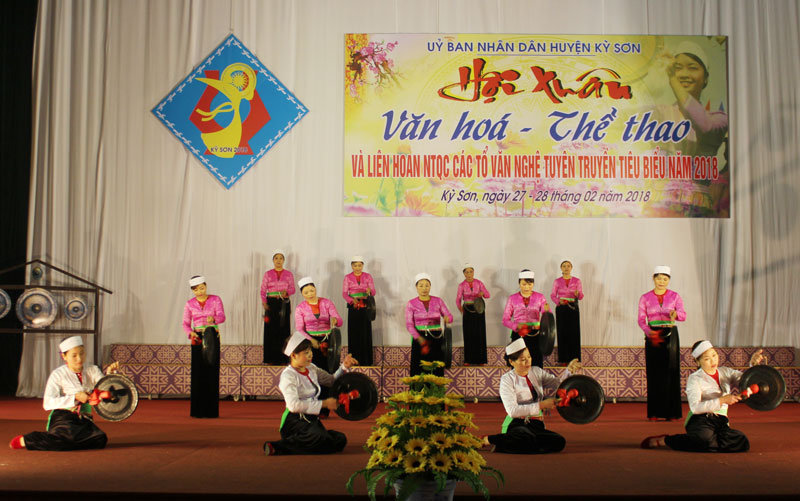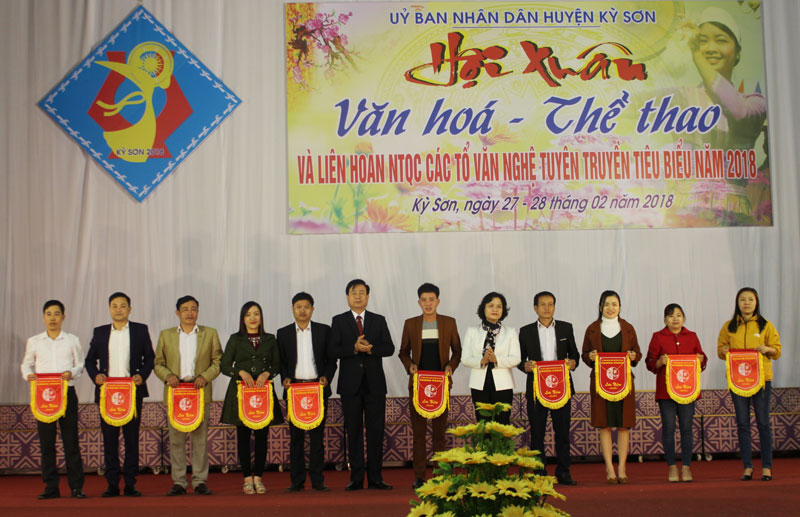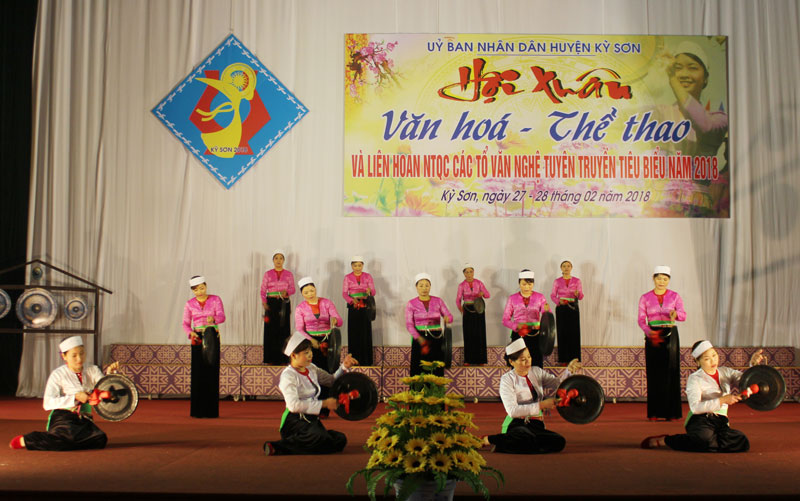
(HBO) - In the morning of February 27, at the Ky Son District Cultural Center, the district People's Committee held the opening ceremony of The Spring Festival of Sports and Culture in Ky Son District in the spring of the year of the Dog 2018. The festival was attended by 10 delegations with more than 300 actors, artists, athletes and many local people in the whole district.
Spring Festival of - Sports and Culture is
held annually by Ky Son District. It is a beautiful traditional culture of all
ethnic groups in the district. This shows the preservation and promotion of
ethnic culture, marking the beginning of a new year of determination and
victory. This is also a chance for actors, artists and athletes to show their
talents. Through the Spring Festival, the sentiment and solidarity of the
people of ethnic groups in the district is more connected.

Ky Son district leaders presenting honorable
flags to the delegates participating the Spring Festival.

The performance of gong concert of the
delegation of Mong Hoa commune attending the festival
Attending the Spring Festival, the actors,
artists, athletes will exchange and compete in some attractive contents such
as: the popular arts festival of the typical entertainment group in 2018, the
packing competitions of bánh ốc and bánh tréo kheo (Oc cake and Treo Kheo
Cake), buffalo braid competition and national sports competitions such as tug
of war, crossbow shooting, stick pushing, etc.
The Spring Festival will take place in two
days of February 27 - 28 at the District Central Cultural Center and Ky Son
District Stadium.
Hoa Binh province has carried out multiple programmes and initiatives to revive its cultural heritage which has gradually fallen into oblivion through the ebbs and flows of history.
The most prominent and defining feature in the prehistoric era of Hoa Binh is the Hoa Binh Culture. The Culture was first discovered in Hoa Binh. The significant prehistoric culture represents not only Vietnam but also Southeast Asia and southern China. Through excavations of cave sites in the limestone regions of Hoa Binh, French archaeologist M. Colani introduced the world to a "Stone Age in Hoa Binh province – Northern Vietnam" in 1927. On January 30, 1932, the First Congress of Far Eastern Prehistorians, held in Hanoi, officially recognised the Hoa Binh Culture.
Known as the "Land of Epic History”, Hoa Binh province, the gateway to Vietnam’s northwest, boasts a strategic location and a unique cultural tapestry woven by its ethnic minority communities.
The People's Committee of Luong Son District recently held a ceremony to receive the certificate recognizing Sau Communal House in Thanh Cao Commune as a provincial-level historical and cultural site.
Recognising the importance of cultural heritage preservation in protecting and promoting the value system of Vietnamese culture, and serving socio-economic development in the new period, Party committees and local administrations in Hoa Binh province have identified it as a key task in the cultural development strategy. The province has been making efforts in mobilising resources, creating consensus among people and engaging ethnic communities in preserving and promoting cultural identity.
Hoa Binh province has captured growing attention both domestically and internationally for its distinctive cultural heritage and rich history. Most notably, it has been renowned for its famous Hoa Binh culture, considered the cradle of ancient Vietnamese civilisation. Looking ahead to significant milestones in 2025 and the 140th anniversary of province establishment in 2026, Hoa Binh Newspaper presents a comprehensive overview of the province's development across economic, social, cultural, tourism, and security domains.




